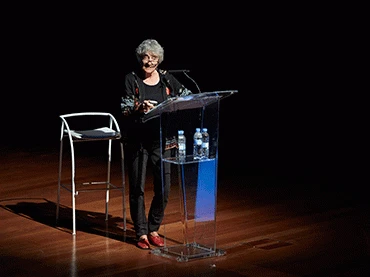
Lucy Lippard lecturing at the Museo Reina Sofía, 2018
Held on 18 oct 2018
Lucy Lippard (1937) is an American writer, art critic, curator and activist whose reflections have been at the centre of contemporary discussions of feminism, identity, and life’s capacity to transform art. Lippard will be presenting the seventh lecture within the lecture series of Museo Reina Sofía, which on this occasion will be complemented by a workshop led by Lippard herself.
Lippard’s work has been central to a number of contemporary debates including the dematerialization of art in the late 1960s, artistic protests against the Vietnam War in 1970, feminist identity, the aesthetics of social minorities in US, and, more recently, the relationships between art, territory and ecology. However, her trajectory has gradually led her away from art institutions and the art system and into approaching art from life itself.
Since 2010, the academic year of the Study Centre is inaugurated and closed with a lecture. Linda Nochlin, T. J. Clark, Hans Belting, Simón Marchán, Benjamin Buchloh, and Nelly Richard have each explored in their lectures different methodological approaches and tensions affecting art history in recent years. In this seventh lecture the programme has been renamed the Juan Antonio Ramírez Chair by the Museo in homage to the art historian and lecturer Juan Antonio Ramírez (1948–2009), the founder of the MA in Contemporary Art History and Visual Culture, run by the Autonomous and Complutense Universities of Madrid and the Museo Reina Sofía, and a tireless advocate of the ethical and conceptual possibilities of modern and contemporary art.
The Juan Antonio Ramírez Chair, with its annual master lectures, sets out to constitute a space of reflection on art history in terms of its limits and vanishing points, understood as a discourse with specific attributes (iconic-visual, according to Ramírez) and hugely important to contemporary society during times of image overload. Moreover, owing to his publications on the comic, mass culture, Marcel Duchamp, Salvador Dalí, architecture and cinema, Ramírez will undoubtedly be remembered as a tireless spokesperson against the disappearance of the discipline from the curriculums of secondary education and as an outspoken intellectual who defended copyright. It is this belief in the current need to defend art in its freest and most inventive and original form that has led the Museo to create the Juan Antonio Ramírez Chair, with its first focal point being Lucy Lippard, an intellectual whose work straddles curatorship, critique, academia and institutional experimentation.
As an intellectual introduction and opening statement for the discussion around this new lecture, we quote below the author’s own words:
"Conventional wisdom has it that 'art speaks for itself' so even the goal of saying something beyond the artwork can be contentious. James Baldwin said that 'The purpose of art is to lay bare the questions which have been hidden by the answers.' That’s an amazing gift…. and responsibility.
I’ve long advocated for art that escapes the artworld and elopes with life –social energies not yet recognized as art. Talking to artist friends (those who led the way out of the art world toward life) I have found that one of the issues that most interests them is how far outside of the art world can artists work and still be satisfied that they’re making art. And still be recognized as artists, not sociologists or 'merely' activists. And still make a living outside of that sandbox we were nurtured in. It’s not easy to totally disavow recognition by the market and the institutions, and if you’ve managed to do it, we probably don’t know what you’re doing. Does it matter? Is it still Art? Who cares?
The dilemma about the artist’s choice between remaining independent and powerless or being co-opted by the powerful mainstream art world is decades long. Perhaps the toughest question we have to ask ourselves is: What do we value most individual success or a collective social victory no matter how apparently small? Over the years a lot of smart things have been said about the possibilities for artists to be in museums and still take on issues, though it may take decades to be accepted...
So, again: What Do We Want to Say? How Do We Want to Say It? Where do we go from here? These questions are directed as much at me as at you. Personally, the temptation to be cynical, nasty, and bridge-burning can be overwhelming, but that puts us in the same bag as the opposition. There’s a line between skepticism and cynicism. Someone said: 'Pessimism is a waste of time'. And optimists are dissed as Utopian and politically reactionary. It’s true that we need to be down to earth. But we also need something to hope for, to long for, to reach for. I hardly ever give a talk without citing Antonio Gramsci: Pessimism of the Intellect Optimism of the Will. I don’t think it’s ever been better said."
Lucy Lippard, Julay 2018
Organised by
Museo Reina Sofía
Education programme developed with the patronage of
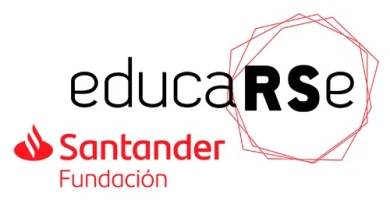

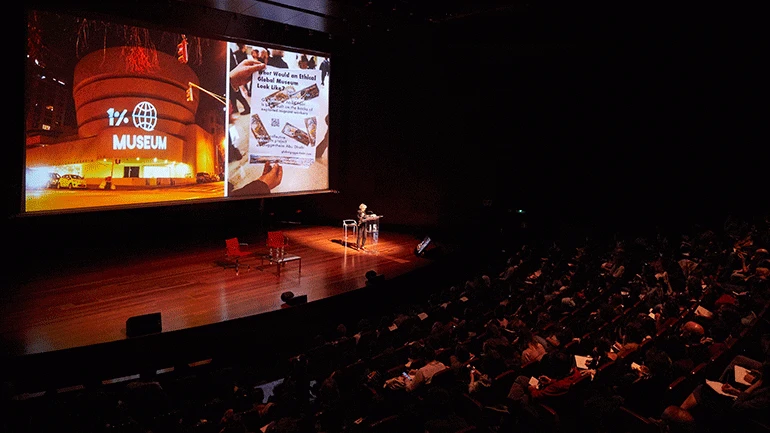
Más actividades

Oliver Laxe. HU/هُوَ. Dance as if no one were watching you
Tuesday, 16 December 2025 – 7pm
As a preamble to the opening of the exhibition HU/هُوَ. Dance as if no one were watching you, film-maker Oliver Laxe (Paris, 1982) engages in conversation with the show’s curators, Julia Morandeira and Chema González, touching on the working processes and visual references that articulate this site-specific project for the Museo Reina Sofía. The installation unveils a new programme in Space 1, devoted from this point on to projects by artists and film-makers who conduct investigations into the moving image, sound and other mediums in their exhibition forms.
Oliver Laxe’s film-making is situated in a resilient, cross-border territory, where the material and the political live side by side. In HU/هُوَ. Dance as if no one were watching you, this drift is sculpted into a search for the transcendency that arises between dancing bodies, sacred architectures and landscapes subjected to elemental and cosmological forces. As a result, this conversation seeks to explore the relationship the piece bears to the imagery of ancient monotheisms, the resonance of Persian Sufi literature and the role of abstraction as a resistance to literal meaning, as well as looking to analyse the possibilities of the image and the role of music — made here in collaboration with musician David Letellier, who also works under the pseudonym Kangding Ray — in this project.
These inaugural conversations, part of the main working strands of the Museo’s Public Programmes Area, aim to explore in greater depth the exhibition narratives of the shows organised by the Museo from the perspective of artists, curators and specialists.
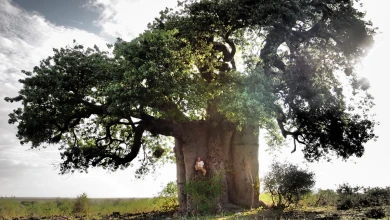
Francisco López and Barbara Ellison
Thursday, 11 December - 8pm
The third session in the series brings together two international reference points in sound art in one evening — two independent performances which converse through their proximity here. Barbara Ellison opens proceedings with a piece centred on the perceptively ambiguous and the ghostly, where voices, sounds and materials become spectral manifestations.
This is followed by Francisco López, an internationally renowned Spanish sound artist, who presents one of his radical immersions in deep listening, with his work an invitation to submerge oneself in sound matter as a transformative experience.
This double session sets forth an encounter between two artists who, from different perspectives, share the same search: to open ears to territories where sound becomes a poetic force and space of resistance.
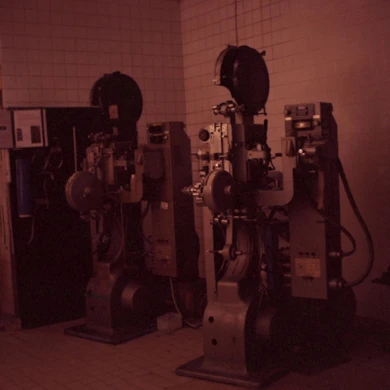
Long Live L’Abo! Celluloid and Activism
4, 5, 6 DIC 2025
L’Abominable is a collective film laboratory founded in La Courneuve (Paris, France) in 1996. It came into being in response to the disappearing infrastructures in artisan film-making and to provide artists and film-makers with a self-managed space from which to produce, develop and screen films in analogue formats such as Super 8, 16mm and 35mm. Anchored in this premise, the community promotes aesthetic and political experimentation in analogue film opposite digital hegemony. Over the years, L’Abominable, better known as L’Abo, has accompanied different generations of film-makers, upholding an international movement of independent film practices.
This third segment is structured in three sessions: a lecture on L’Abo given by Pilar Monsell and Camilo Restrepo; a session of short films in 16mm produced in L’Abo; and the feature-length film Une isle, une nuit, made by the Les Pirates des Lentillères collective.
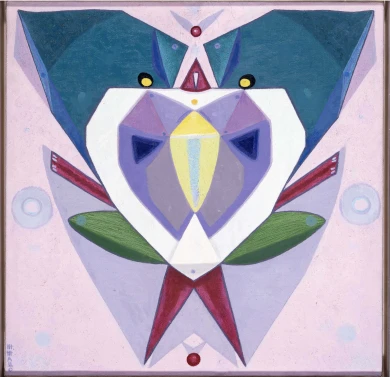
Estrella de Diego Lecture. Holding Your Brain While You Sleep
Wednesday, 3 December 2025 – 7pm
Framed inside the Museo Reina Sofía’s retrospective exhibition devoted to Maruja Mallo, this lecture delivered by Estrella de Diego draws attention to the impact of the artist’s return to Spain after her three-decade exile in Latin America.
Committed to values of progress and renewal in the Second Republic, Mallo was forced into exile to Argentina with the outbreak of the Civil War and would not go back to Spain to settle definitively until 1965 — a return that was, ultimately, a second exile.
Mallo saw out her prolific artistic trajectory with two impactful series: Moradores del vacío (Dwellers of the Void, 1968–1980) and Viajeros del éter (Ether Travelers, 1982), entering her most esoteric period in which she drew inspiration from her “levitational experiences” of crossing the Andes and sailing the Pacific. Her travels, both real and imaginary, became encounters with superhuman dimensions.
In parallel, her public persona gained traction as she became a popular figure and a key representative of the Generation of ‘27 — the other members of which also started returning to Spain.
This lecture is part of the Art and Exile series, which seeks to explore in greater depth one of the defining aspects of Maruja Mallo’s life and work: her experience of exile. An experience which for Mallo was twofold: the time she spent in the Americas and her complex return to Spain.
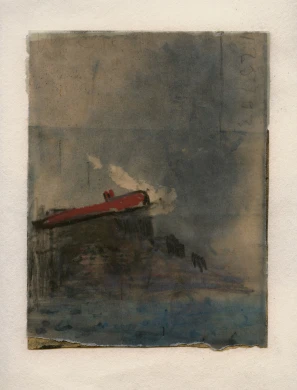
Juan Uslé. That Ship on the Mountain
Tuesday, 25 November 2025 – 7pm
Ángel Calvo Ulloa, curator of the exhibition Juan Uslé. That Ship on the Mountain, engages in conversation with artist Juan Uslé (Santander, 1954) in the Museo’s Auditorium 400 to explore in greater depth the exhibition discourse of this anthological show spanning four decades of Uslé’s artistic career.
The show casts light on the close relationship Uslé’s work bears to his life experiences, establishing connections between different stages and series which could ostensibly seem distant. Framed in this context, the conversation looks to explore the artist’s personal and professional journey: his memories, experiences of New York, his creative process, conception of painting, and ties with photography and film, and the cohesiveness and versatility that characterise his art. Key aspects for a more in-depth understanding of his artistic sphere.
The conversation, moreover, spotlights the preparatory research process that has given rise to this exhibition to grant a better understanding of the curatorial criteria and decisions that have guided its development.
These inaugural conversations, part of the main working strands of the Museo’s Public Programmes Area, aim to explore in greater depth the exhibition narratives of the shows organised by the Museo from the perspective of artists, curators and specialists.
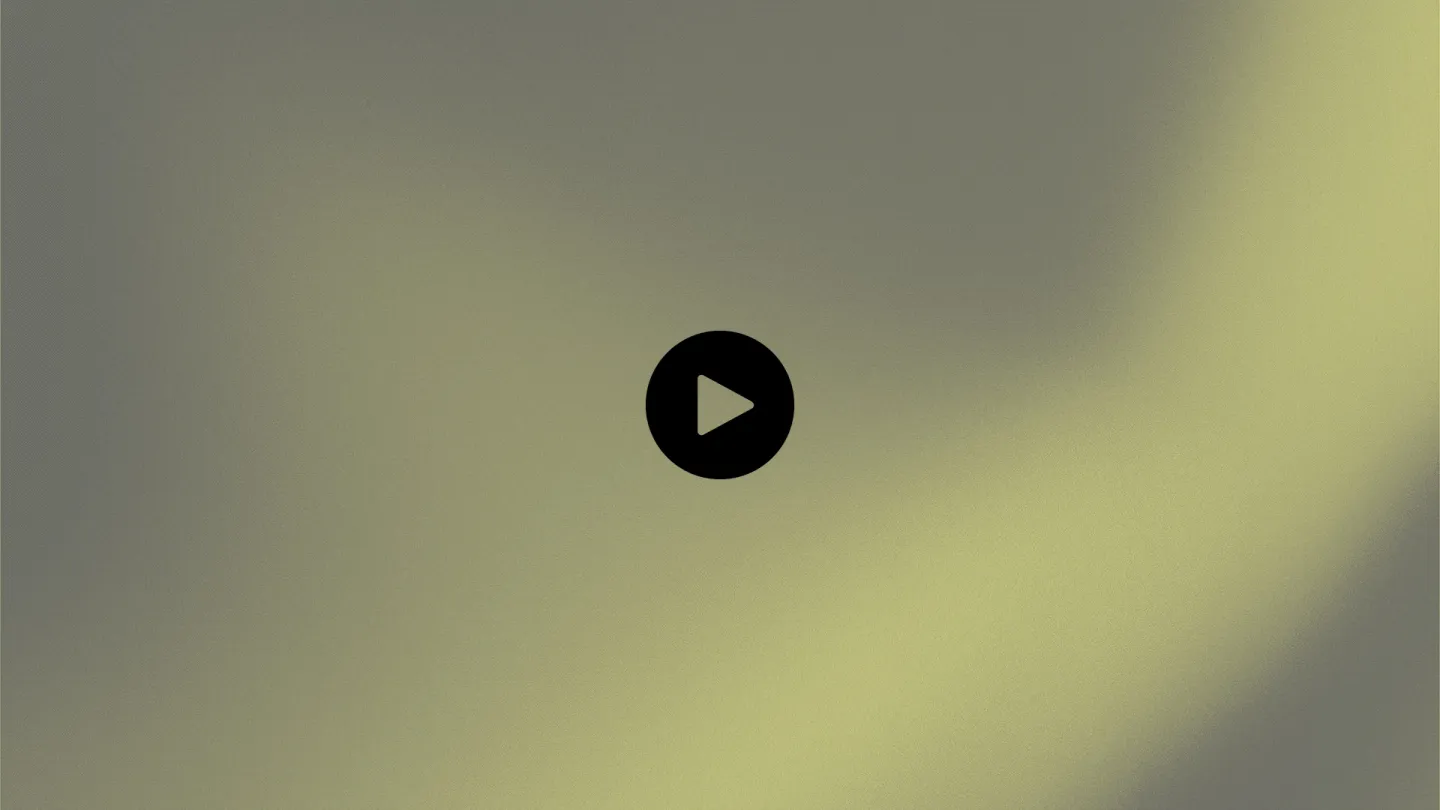

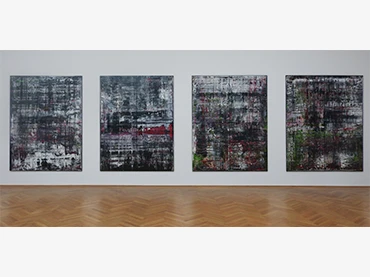
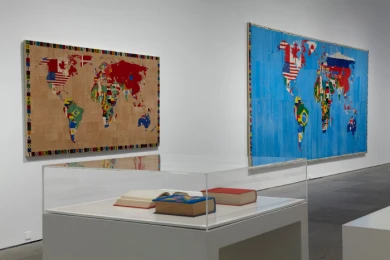

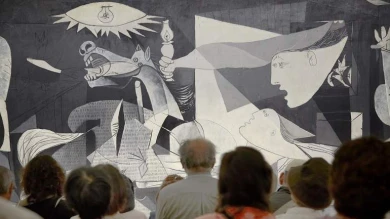
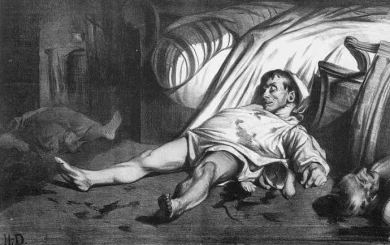



![Miguel Brieva, ilustración de la novela infantil Manuela y los Cakirukos (Reservoir Books, 2022) [izquierda] y Cibeles no conduzcas, 2023 [derecha]. Cortesía del artista](https://recursos.museoreinasofia.es/styles/small_landscape/public/Actividades/ecologias_del_deseo_utopico.jpg.webp)
![Ángel Alonso, Charbon [Carbón], 1964. Museo Reina Sofía](https://recursos.museoreinasofia.es/styles/small_landscape/public/Actividades/perspectivas_ecoambientales.jpg.webp)